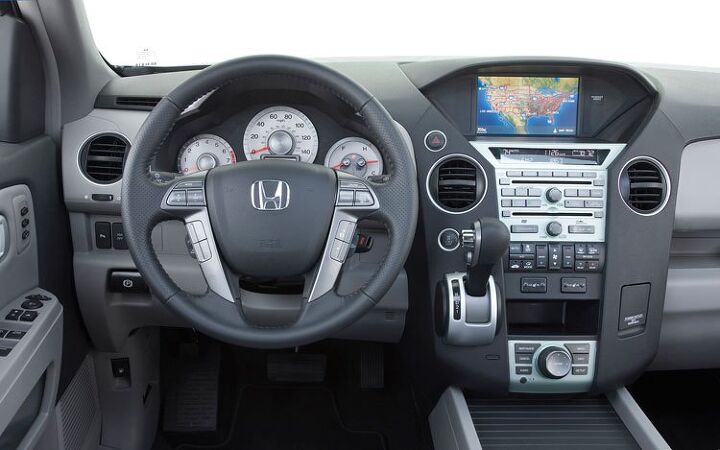Piston Slap: Paradise By The Dashboard Light. Or Hell

Cindy writes:
I have a 2009 Honda Pilot that I love very much. I was wondering how far I could drive once the gas light comes on. Highway or city. Thanks!
Sajeev Answers:
I just love crazy questions like these; they are the most interesting to read on car forums. So let’s Piston Slap this one. Be it an “idiot light” or a terminal mileage calculation via trip computer, all vehicles have a low gas warning feature. Since I had difficulty searching the Honda Pilot forums, I’ll go with a general statement: most low fuel systems activate with 1 or 2 gallons of gas left in the tank.
The (2WD) Honda pilot gets 17/23 MPG by the EPA’s estimate. So you’d have somewhere between 34 and 46 miles before you’d run out of gas, if you believe the (dubious) general statement of the light coming on with two gallons left in the tank. Cut it in half if you think one gallon is all you have left. And cut it even more if you never achieve the EPA’s fuel consumption figures in your real world commute.
Yes, I know this is a dumb answer. As I realized on a trip from Oklahoma City to Houston in my Lincoln Mark VIII, the only right thing do is to fill up the tank when the dashboard warning arrives. Otherwise, a host of potential problems can creep up, and leave you stranded or with not nearly enough fuel pressure to drive a safe speed on the road.
Make your dashboard happy, and you’ll stay happy: keep the tach in the black and the fuel light extinguished.
Send your queries to mehta@ttac.com

More by Sajeev Mehta


































Comments
Join the conversation
"Aren’t gas tank fuel pumps cooled by by the gas? Run out of fuel and you may damage the pump. It won’t necessarily fail there, instead it may pick an inconvenient time and place of its own choosing." Ample kudos to chuckR for being who I believe was the first entity present to mention what can be a vital bit of info. YMMV.
I, for one, would like an accurate fuel gauge for a change. I fail to appreciate the "human factors" which cause manufacturers to use gauges that "lie." I understand how to read a gauge, expect that from the moment I set out after filling up, the level will decrease, and expect that when the level gets to 0, I have zero fuel remaining. Why can't we actually have gauges that read correctly the quantity of fuel remaining in the tank?
Some years ago my wife had a Mercedes 300SD diesel, and there were few times that I got into that car that the low fuel light was not lit. One night when we were going out to eat we got into her car and, as usual, the needle was on 0/0. When I suggested we take my car instead, my wife assured me that the light had not yet come on, so we had plenty of fuel to get where we were going and back. The route to this particular establishment went through one of the less savory parts of town and, sure enough, the car quit in just about the worst of the least savory part. Note, running a diesel out of fuel is a bad idea. This was in the pre-cell phone era, so I had to find a pay phone and ask a friend to bring me some diesel. Then I had to find the fuel injection priming pump buried deep in a hot engine compartment and pump it enough times to prime the injection system. Turned out that she had driven it on the fuel warning light so much that it burned out the bulb. Then when we got to the restaurant we found it was closed.
I was going to post on the repeat of this thread from this morning (Tues 13 Jul 2010) because one of the commenters had posted a link to a good article on this question: 2008 CanadianDriver 50-litre Challenge http://www.canadiandriver.com/2008/06/23/special-feature-2008-canadiandriver-50-litre-challenge.htm I pumped their data into Xcel and came up with an average of 134.3 km [83.5 mi.] from the time the warning light came on to empty with a standard deviation of 33.8 km [21 mi.]. Now, those were compact cars driven in controlled tests, YMMV. Also the link from Jay Larson above is interesting: http://tankonempty.com/